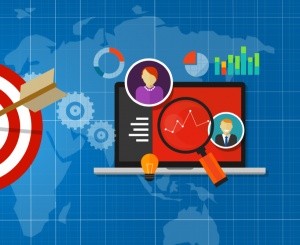Macroeconomic models Start the discussion!
New Category!
Thinking of a Best Practice which could fit in this category? Tell us

What is macroeconomics?
Macroeconomics is the study of performance, behaviour and structure of an economy as a whole. It takes larger indicators, which can include unemployment, Gross Domestic Product (GDP), inflation rates, and nation income, for example.
These indicators are compared and combined to help generate a clearer picture about an economy on a more general, larger scale.
Macroeconomic models are used by both government and corporations in order to determine viable policies and strategies for economic growth. They can help to compare the economies between different countries, their economic performance and outlook, and also explain relationships between areas including inflation, savings, and consumption, for example.
Is Macroeconomic modeling important?
Macroeconomic modeling has an even-increasing role in policy formulation. It helps to better comprehend the past and present economic performance, forecast future performance, formulate potential future economic strategies and test them.
What are the types of the macroeconomic analysis?
There are a range of different macroeconomic models which help to describe the economic outlook and performance of a company or nation, some of which include:
- Simpler models:
The IS-LM (investment-savings, liquidity money) model, also known as Hicks-Hansen model is a simple macroeconomic model helping to describe the relationship between interest rates and assets market.
The Mundell-Fleming model is another simple form of macroeconomic analysis. Serving as an extension of the IS-LM model, this analysis concentrates itself on a small open economy.
- Empirical Forecasting Models:
This type of large-scale macroeconomic analysis, forecasts based on areas such as national income and product accounting data and uses past correlations for predictions. With the first national model being created by Jan Tinbergen, these models are highly detailed, necessitating a large amount of data.
They also involve time series analysis, which maps out data points in chronological order.
- Dynamic stochastic general equilibrium models:
This form of macroeconomic analysis is based on rational choice and resulted from critiques of earlier macroeconomic models.
Dynamic stochastic general equilibrium models focuses on specific actors, such as large companies, households, the state government and their preferences, budgets, and technological influences.
- Agent-based computational macroeconomic models:
Agent-based computational economics (ACE) focus on macroeconomics through defining the agents that are involved in an economy. The interactions agents have with each other and the market more generally, are then studied.
With such technological development, models have continued to evolve in complexity and detail. On Eloquens, there are a number of economic models, pre-built, ready-to-use and download at an instant.
If you wish to find out more about macroeconomics, and models related to the study, please visit these pages:
Definition and Description of macroeconomics
The Investment-savings, Liquidity money (IS-LM) model, description and breakdown



